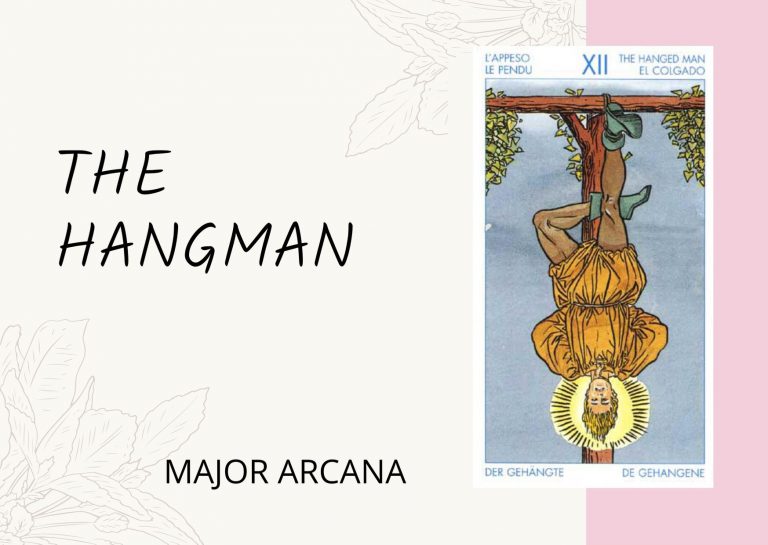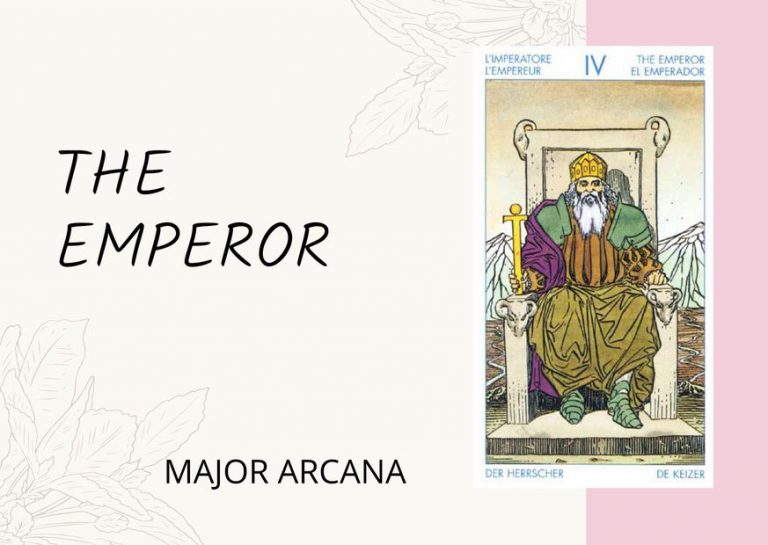Suit of Pentacles

Ace of Pentacles 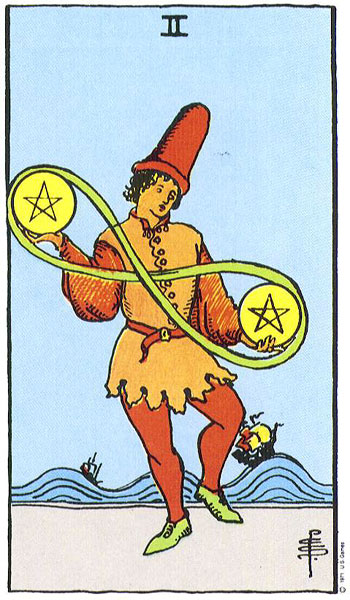
Two of Pentacles 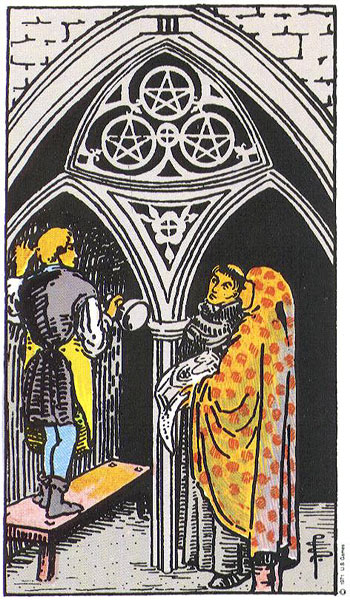
Three of Pentacles 
Four of Pentacles 
Five of Pentacles 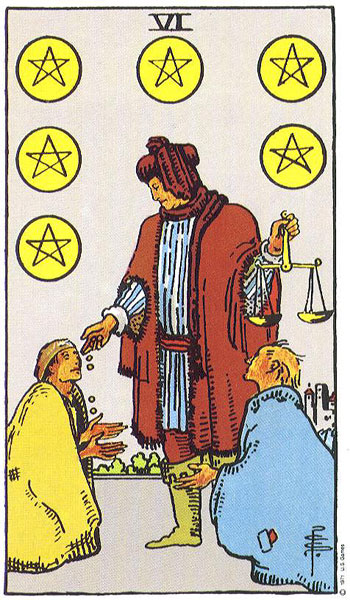
Six of Pentacles 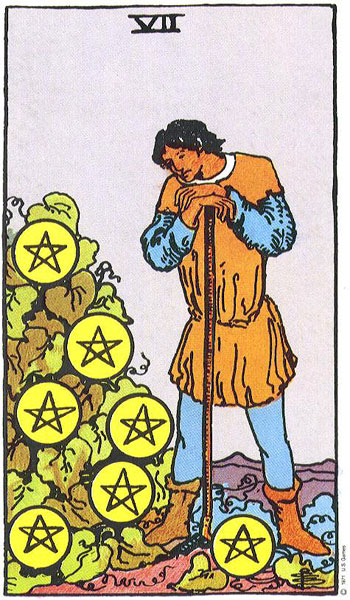
Seven of Pentacles 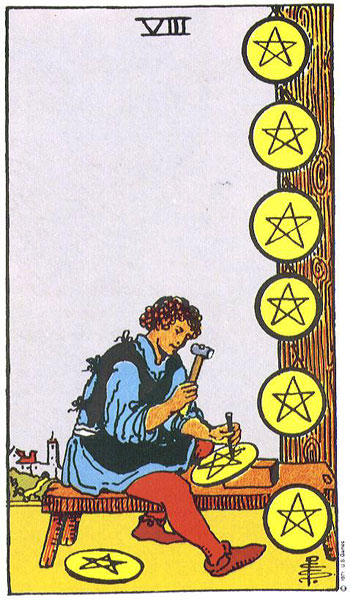
Eight of Pentacles 
Nine of Pentacles 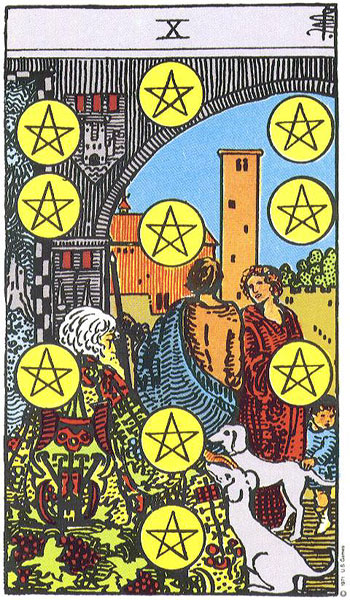
Ten of Pentacles 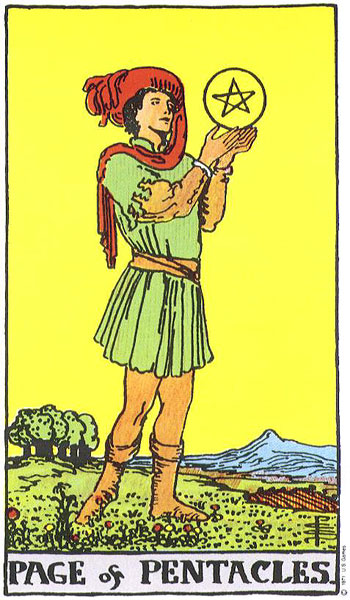
Page of Pentacles 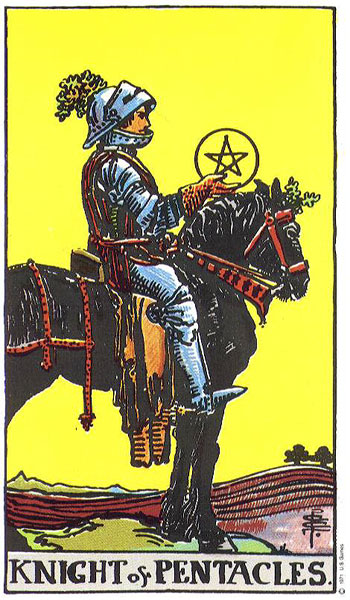
Knight of Pentacles 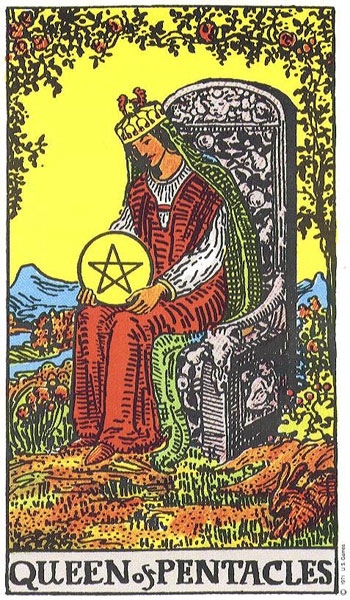
Queen of Pentacles 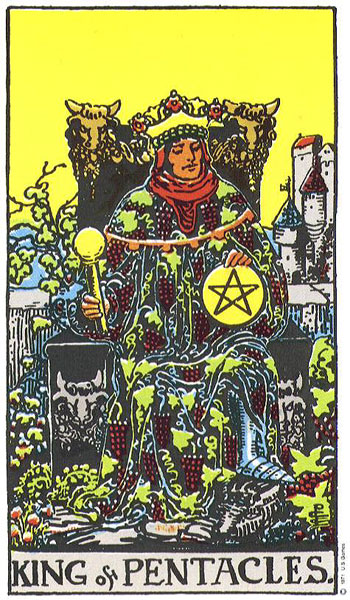
King of Pentacles
King of Pentacles. Key words: a rather dark man, a merchant, master, professor; abundance, prosperity, security.
Queen of Pentacles. Key words: dark woman; presents from a rich relative; rich and happy marriage for a young man; practicality, creature comforts, financial security.
Knight of Pentacles. Key words: a useful man; useful discoveries; efficiency, hard work, responsibility.
Page of Pentacles. Key words: a dark youth; a young officer or soldier; a child; ambition, desire, diligence.
Ten of Pentacles. Key words: represents house or dwelling; legacy, culmination, inheritance.
Nine of Pentacles. Key words: prompt fulfilment of what you want; fruits of labor, rewards, luxury.
Eight of Pentacles. Key words: a young man in business who has relations with you; apprenticeship, passion, high standards.
Seven of Pentacles. Key words: improved position for a lady’s future husband; hard work, perseverance, diligence.
Six of Pentacles. Key words: the present must not be relied on; charity, generosity, sharing.
Five of Pentacles. Key words: conquest of fortune by reason; need, poverty, insecurity.
Four of Pentacles. Key words: pleasant news from a lady; conservation, frugality, security.
Three of Pentacles. Key words: if for a man, celebrity for his eldest son; teamwork, collaboration, building.
Two of Pentacles. Key words: troubles are more imaginary than real; balancing decisions, priorities, adapting to change.
Ace of Pentacles. Key words: the most favorable of all cards; opportunity, prosperity, new venture.
To know more about suits of Tarot, please go here – the Minor Arcana meanings.
To Sum Up about Tarot Cards List
Also we would like to add that this cards is not just a fortune-telling tool or tarot cards list with meanings. All early Tarot decks that have come down to us are pieces of art. In ancient times, decks of cards were created by artists on request of famous people. These cards were expensive. The oldest of the decks containing all 78 cards (the full tarot cards list) that have survived to this day is the deck of the Visconti Sforza family. It was created in the first half of the 15th century in Italy.


